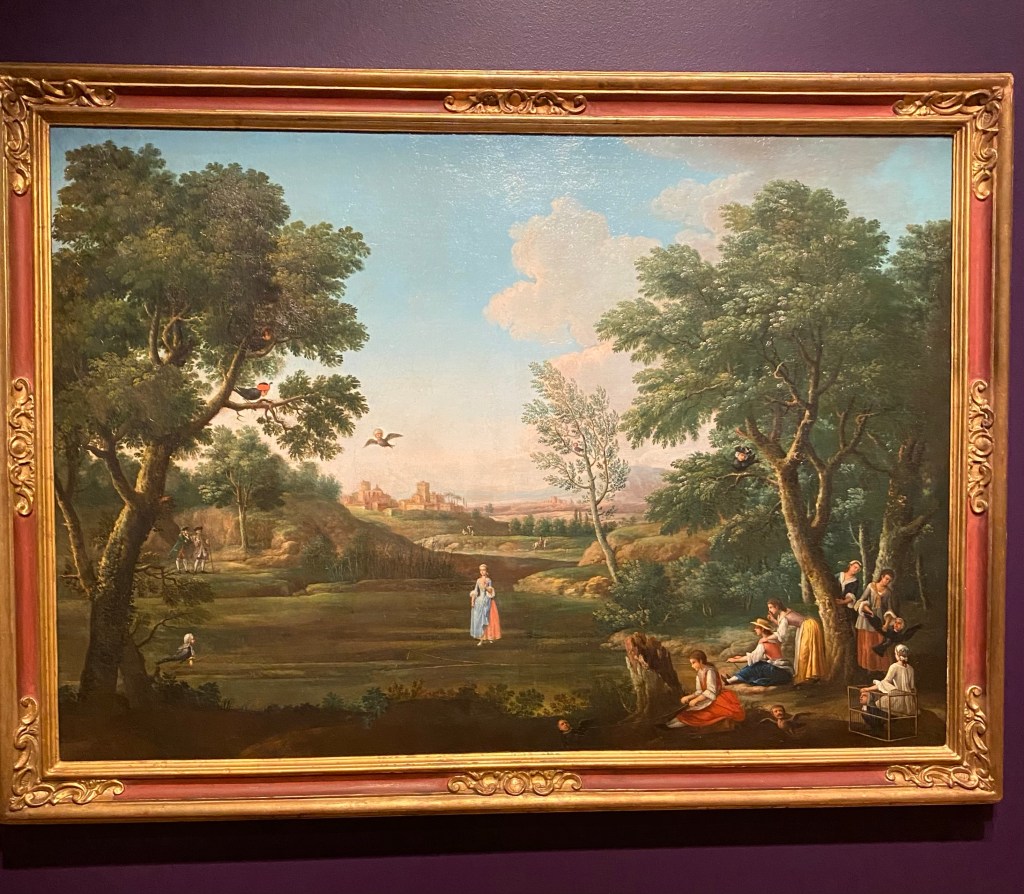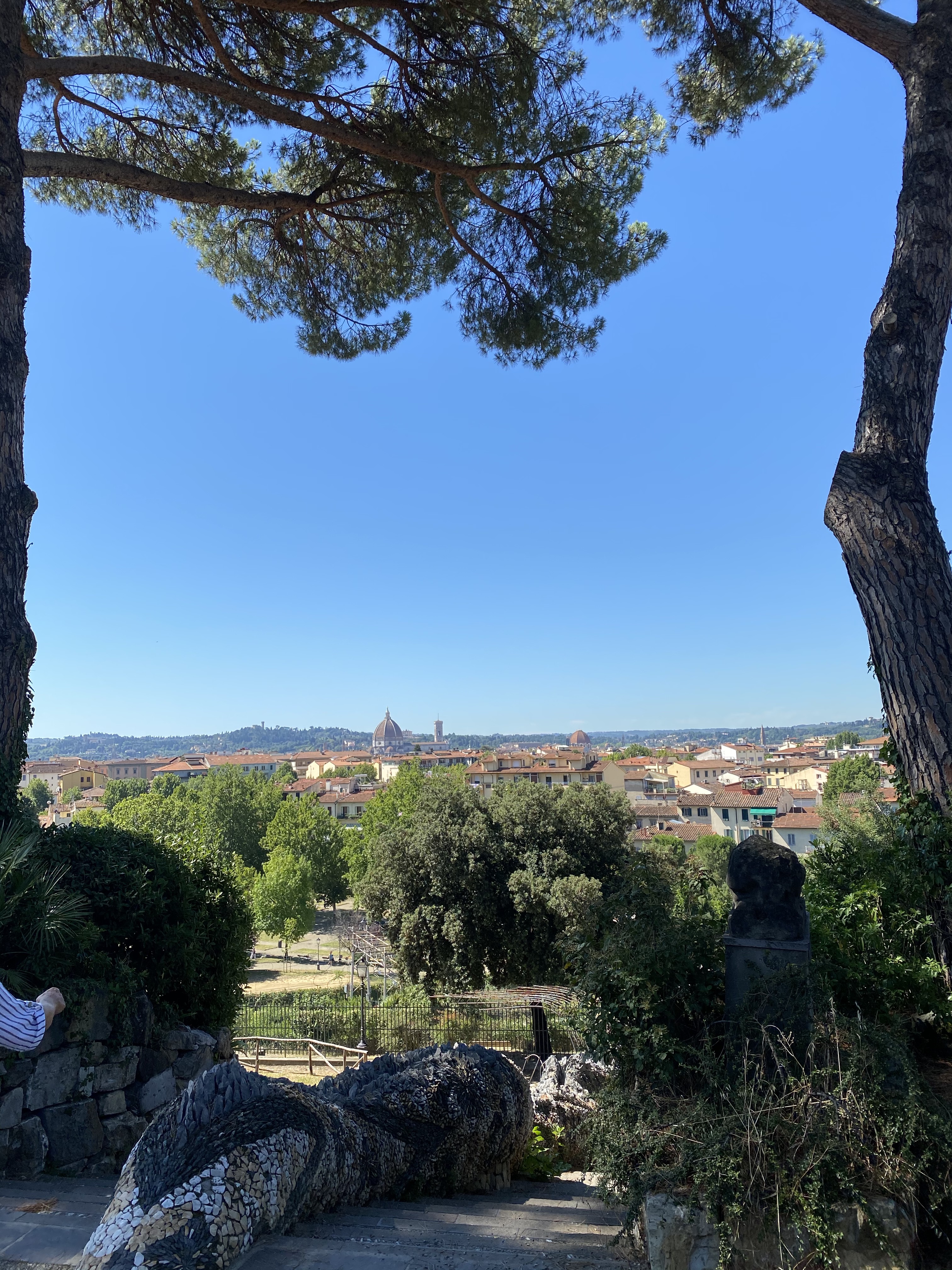

We don’t know who painted Three Young Girls; however, we do know that it was created between 1610 and 1620, and that it was painted in the style of William Larkin. William Larkin was an English artist who painted some of the most fashionable figures of his time. Until he was definitively identified in the 1900s, Larkin was simply known as the “curtain master” for his characteristic inclusion of curtains to frame the figures in his portraits.

Since Larkin was an active and very popular artist during the early 1600s, it seems likely that the anonymous painter of Three Young Girls purposely emulated Larkin’s distinctive style to please his patrons. Some features of Larkin’s style visible in this painting include strong lighting, polished treatment of flesh, and close attention to the details of rich fabrics, jewelry, and oriental carpets.
Three Young Girls was painted during what is known as the Jacobean period in England (1603-1625). This period corresponds to the rule of James I, son of Mary, Queen of Scots. Jacobean portraits are characterized by brilliant, jewel-like color and heavily decorated figures. Every detail of jewelry and fabric is meticulously delineated and recorded.


The girls’ matching earrings depict hunting-horns, or bugle-horns. These horns are a common motif in families’ coats of arms. Having a coat of arms was a symbol of status during this time because they had to be confirmed or granted by the king’s heralds. The hunting-horn motif suggests that the girls’ family were landowners and possibly members of the nobility or gentry (one class below the nobility).



The gold ring the middle girl wears could be either an engagement or a mourning ring. It’s possible that she had already become engaged and wears the symbol of her betrothal. At this time, stringing jewelry on black ribbon was popular. It’s also possible this ring belonged to the girl’s mother and she wears it as a symbol of mourning for her mother’s death.
The three unidentified girls in this painting are a mystery, but by carefully studying the details in the piece, we can learn several things about them. The girls are dressed in matching outfits, a sort of fashionable family uniform. Since fashions go in and out of style, the clothing worn by the figures helps us identify time period and status. The low necklines, lace collars, high waistlines, and yellow lace date the painting to somewhere around 1620. The expensive fabrics and gold, diamond, and coral jewelry the girls wear make it clear that they come from a wealthy family.
Certain details in this painting lead some art historians to theorize that it was painted after the death of the girls’ mother. The gold ring attached to a black string on the hand of the middle girl is one detail that could support this hypothesis. In addition to symbolizing an engagement, rings were used in the 1600s to symbolize mourning. The ring could have belonged to the girl’s mother, hence the large size, and she wears it in remembrance. The youngest girl’s “lady” or “fashion” doll is another clue that supports this theory. The doll is dressed in clothes that represent the style of clothing their mother would have worn. The black fabric of her dress, traditionally the color of death, would then be appropriate. The marigold, blue hyacinth, and periwinkle flowers the two youngest girls wear in their hair can represent, among other things, grief, despair, death, and mourning.

The red and yellow coral bracelets the oldest and youngest girls wear not only reaffirm their wealthy origins but may have been intended as powerful talismans (objects believed to have special powers). Coral beads were talismans of safety and good health, especially for children. Child mortality was high during this time, so perhaps these young girls were given coral to protect them from bad luck, illness, and death.
The Fruit: Traditionally in art, ripe fruit has represented fertility. However, the fruit held by the oldest and middle girls are only semi-ripe; they could be symbols of the girls’ immaturity and a suggestion of physical development in the future. In that light, the grapes and the pears may be symbols of the sisters’ future roles as mothers and wives. Grapes are symbolic of good luck. The pear is a celebration of a woman’s form.
The Flowers: The two youngest girls have marigolds, blue hyacinths, and blue-purple periwinkles in their hair; the eldest wears a red carnation. Although each flower has many meanings, marigolds traditionally symbolize affection and obedience; carnations symbolize betrothal; blue hyacinth, grief and mourning; and periwinkle, many things, from death to immortality to lovemaking. Although the individual flowers can be associated with love, affection, virginity, constancy, and marriage (all perhaps appropriate for a painting of young girls), they can all also represent grief, despair, death, and mourning.
Red, yellow, and green are the dominant colors in this painting. The artist probably chose these colors to make the painting vibrant and intense. The red can primarily be found in the dresses and the girls’ skin; the yellow in the lace, braiding, and ribbons on their dresses; and the green in the heavy drapes gathered behind the girls in the background.
The girls stand in a row holding each others’ hands and arms, indicating they have a close relationship. Their dresses and jewelry are identical and their headdresses are very similar. Each girl wears her hair in the same style, and they all have the same blue-gray eyes, red lips, pale skin, rosy cheeks, and long, slender noses.
The info above and more can be found at https://www.denverartmuseum.org/en/edu/object/three-young-girls































You must be logged in to post a comment.